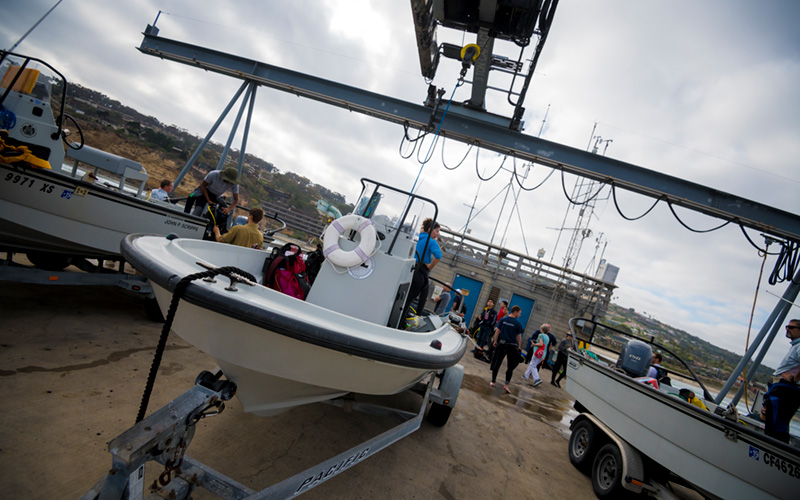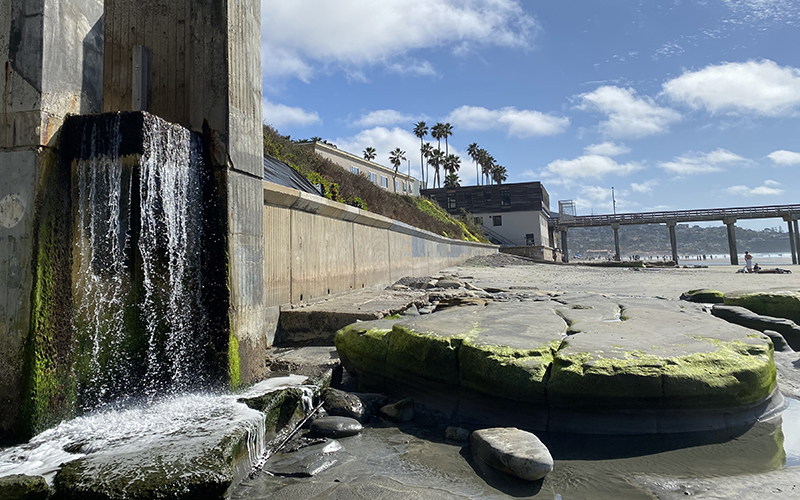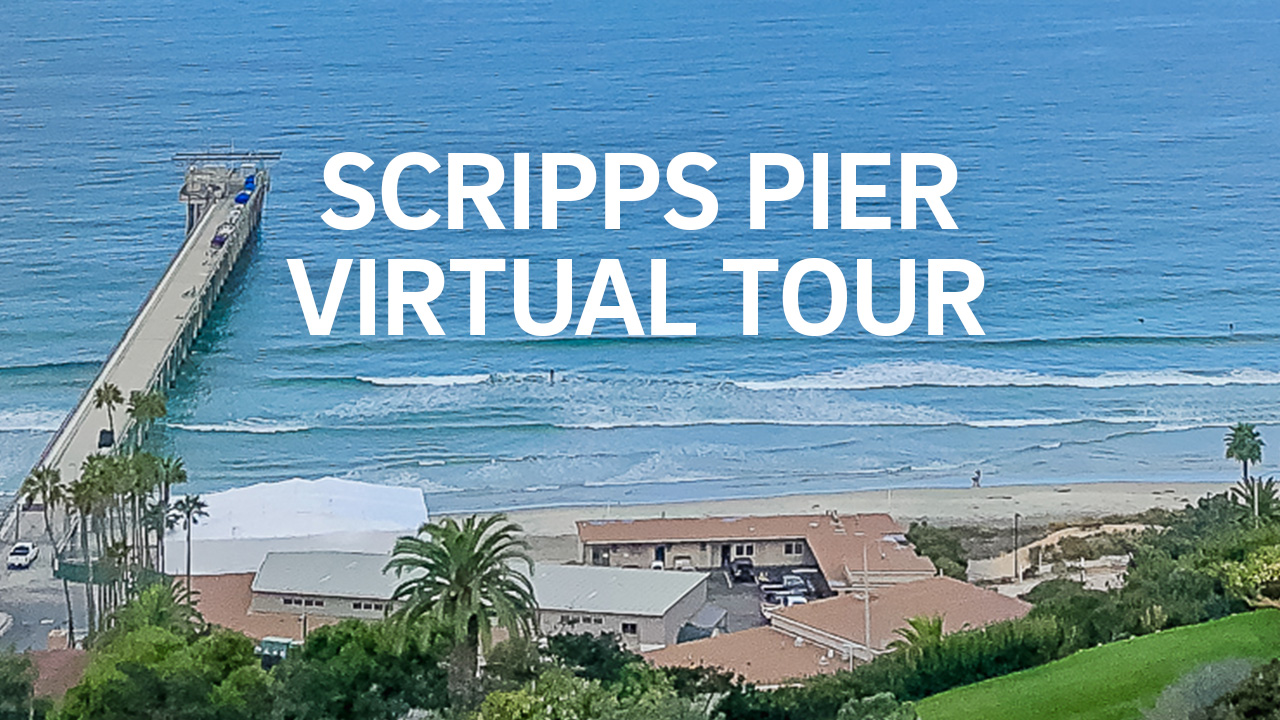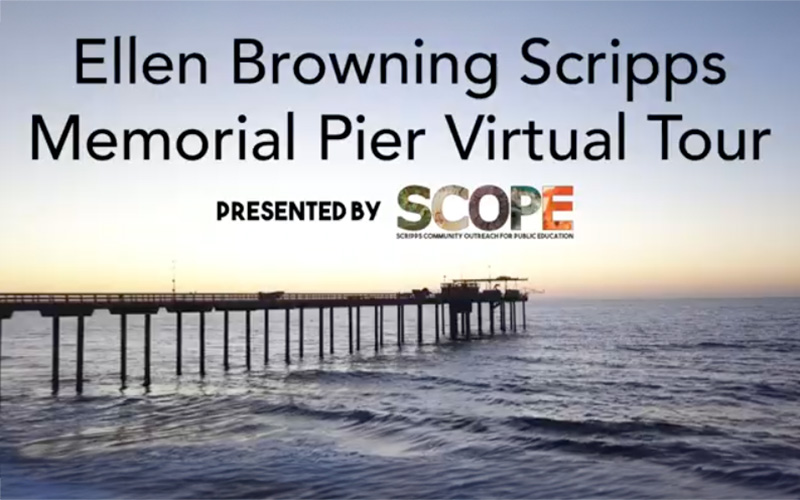Ellen Browning Scripps Memorial Pier
The Ellen Browning Scripps Memorial Pier is an icon of UC San Diego’s Scripps Institution of Oceanography and a vital research facility. Spanning 1,084 feet in length, this cherished La Jolla landmark houses environmental monitoring stations and serves as a launching pad for small boat and scientific diving operations.
The modern Scripps Pier was built in 1988, replacing the original pier built in 1916 with funds provided by its namesake patron. Due to the sensitive nature of ongoing research, access to the pier is generally restricted to authorized personnel. There are, however, frequent guided tours of the pier offered to the public.
The patronage of the Scripps family continues into the modern day. Most recently family members supported the refurbishment of the pier’s railings along with construction of an adjacent laboratory.
Public Tours
Every month, Scripps Institution of Oceanography offers free historical tours suitable for area residents, new faculty and staff, first-time visitors to our campus, and the general public. Led by knowledgeable volunteer guides, these one-hour tours are held on the second and fourth Saturday of each month (excluding holidays) and showcase the most notable features of our beautiful campus, including the Ellen Browning Scripps Memorial Pier.
Educational Tours
Tours for schools and community groups are provided through Scripps Community Outreach for Public Education (SCOPE). SCOPE is a student-led, volunteer-driven outreach program geared towards educating students and community groups about the science that happens at Scripps.
Research on the pier
The Scripps Pier hosts several research stations operated by scientists around campus who study everything from ocean currents to marine microbiology. Small boats are also launched from either side of the pier to support nearshore research and a set of stairs on the north side of the pier provide access for scientific diving teams.


Safe Seawater
A series of outfalls on the beach adjacent to Scripps Institution of Oceanography discharge seawater back to the ocean. Because the ocean adjacent to Scripps Institution of Oceanography has been designated as an Area of Special Biological Significance as well as a Marine Protected Area, UC San Diego takes special precautions to ensure that these outfalls do not contain pollutants.
Our Campus
Scripps Institution of Oceanography
Business Hours
Monday - Friday 8:00 AM - 4:30 PM

